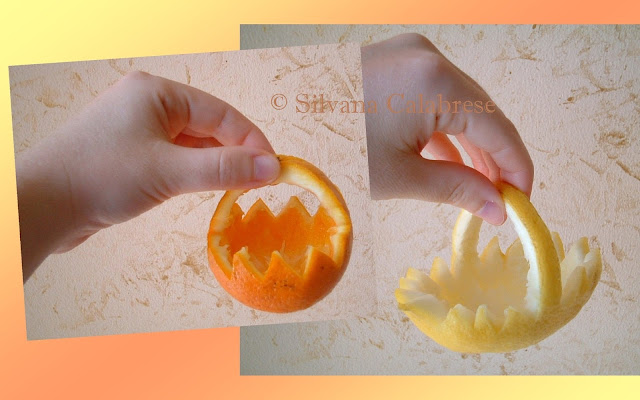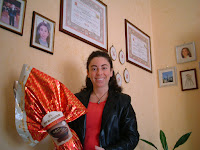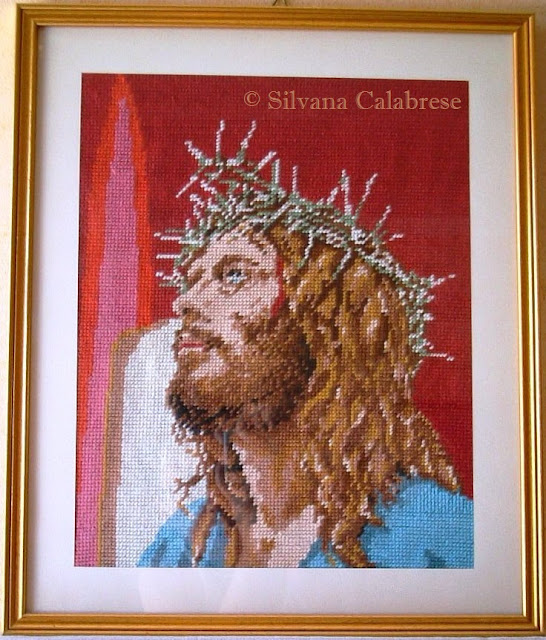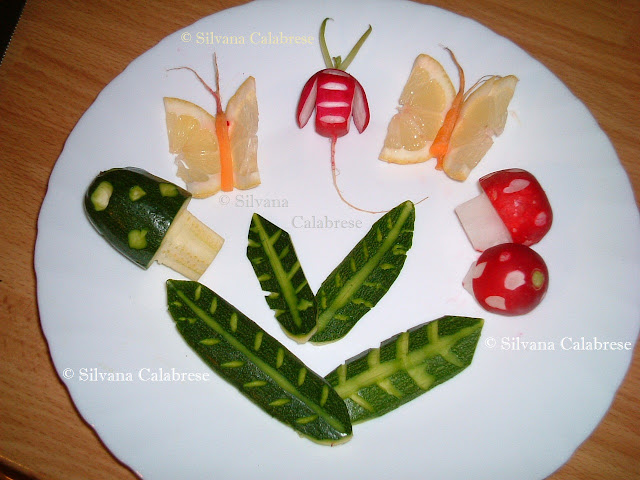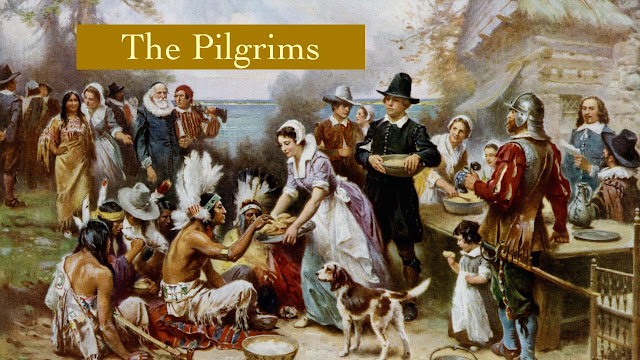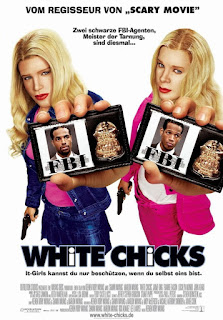Dec 31, 2016
Dec 28, 2016
Dec 26, 2016
Tsunami December 26, 2004. An epic tragedy
A sea of sorrow. The world suffers an epic
tragedy as a tsunami spreads death across Asia.
How the Deadly Waves Spread
The most
powerful earthquake in 40 years quickly turned into one of the worst disasters
in a century, as walls of water crashed ashore across South Asia
Scope Of The Tragedy
The death
toll has surpassed 100,000 and will surely climb. Thousands are missing, and
millions have been left homeless, threatened by diseases that are spread
through dirty water, mosquitoes and over-crowding.
Tanzania. 10 dead.
Kenya. 1 dead.
Somalia. 200 dead.
Maldives. 73 dead.
India. 9,000 dead. Most deaths were in the
southern province of Tamil Nadu. As
many as 10,000 more are feared dead in the Andaman
and Nicobar islands.
Bangladesh. 2 dead.
Burma. 90 dead.
Thailand. 5,000 dead. Thousands are missing from
villages near such popular coastal resort areas as Phuket.
Malaysia. 66 dead.
Sri Lanka. 29,000 dead. Tsunamis lose their energy
in shallow water. The ocean off Sri Lanka’s eastern coast is thousands of
meters deep just a few kilometers from shore, so the tsunami hit with much more
force than it did in Bangladesh,
where the shallow water extends more than 160 km out to sea.
Indonesia. 80,000 dead. By far the highest death
toll was on the remote northern end of the Indonesian island of Sumatra, which suffered the double
shock of the quake and the earliest strike of the tsunami. Tens of thousands
died in Meulaboh and the provincial
capital, Banda Aceh.
7 hours. Approximate travel times of the
tsunami after the initial earthquake.
Undersea
ridges altered the course of the waves, redirecting N the tsunami's main
strength '- toward Somalia.
Was it a tidal wave?
Tsunamis
are not tidal waves because they are not influenced by the gravitational effect
of the moon. But their appearance from shore can be similar to a rapidly rising
or falling tide, and the severity of a tsunami can be affected by the level of
the tide when the waves hit land.
What causes a tsunami?
A tsunami
(a Japanese word that translates as “harbor wave”) is triggered by a vertical
disturbance in the ocean, such as an earthquake, landslide or volcanic eruption.
1) The
disaster was caused by a massive earthquake
off the coast of Indonesia, where two plates
of the earth’s crust grind against each other.
2) About 1,200 km of the plate
snapped, forcing a massive displacement
of water in the Indian Ocean.
3) The
waves spread in all directions, moving as fast as 800 km/h . In the deep
ocean, the waves may be imperceptible, but they slow down and gain height as
they hit shallow water near shore.
The retreat
of a tsunami from land can be quick—and just as dangerous as its approach. The
waves often come in a series.
In deep
water tsunamis are very long, hallow waves, which means they don’t lose much
energy fighting gravity. Given enough initial force, they will travel vast
distances until they are slowed by resistance from the sea floor near shore.
A Giant Jolt: The
Indian plate usually moves northeast about 6 cm a year. Scientists estimate that in last
week’s quake, the two plates slid about 15 m at once.
Source:
Time, special report Tsunami December 26, 2004, January 10, 2005.
Dec 24, 2016
Dear children, the economic crisis has hit the North Pole of Santa Claus
Santa Claus challenge the
crisis and like us tighten the belt
We knew it
would happen, only, we’ll hope that does not happen so soon. The economic
crisis has reached the North Pole of Santa Claus. You will not receive
gifts this year. The IMU
(council tax only) is only the spark of the disaster. It all started with the
rise in food prices: Santa Claus had, like many of us, "tighten their
belts", which had to her belly an effect equal to gastric banding. So he
lost several pounds and decreased him blood pressure. He’ll live longer, but hardship.
The increase in excises on magic fuel that sets in motion the magic sleigh, only
aesthetically pulled by reindeer, prevents it use. The gasoline that costs more
than solid polar milk is the reason of huge disadvantages.
Let us now
turn to him employees, elves and goblins. Some of them ended up in layoffs;
others took advantage of early retirement to avoid the heartbreaking experience
to see the scenario of the end of a millenary tradition; others have had
accidents at work: according to the input sheet to “glacialhospital” they have multiple
and broken fractures caused by falls. In other words, have stumbled upon the
ozone hole.
The melting
of glaciers caused by global warming caused the loss of several thousand square
miles of his laboratory with toys, wrapping paper and glittering ribbons now
irrecoverable, lost in the Arctic Ocean. Strange to say, but this event isn’t a
problem because the cadastral plan was not declared in accordance with the
actual size of the laboratory. They are small construction scams
scattered here and there around the globe.
Maybe this
year should be sent, in a sealed envelope, a money order or a few bills that
serves to restore the Arctic finances.
However you
can still write him, indeed continue to do so. Continue to believe in
the magic of Christmas. Support
the tradition even as adults and with the same heat of when pushed to make
those, albeit, small projects (decorations, little crafts, greeting cards, little
films, elegant table), but full of faith, joy, enthusiasm, perspicacity.
Source: "La Gazzetta del Mezzogiorno", an italian
newspaper, December 15, 2012, p. 28.
Dec 20, 2016
Dec 18, 2016
Holidays and celebrations
In the
States there are only two official national holidays, Thanksgiving and
Independence Day, apart from Christmas, New Year's Day and Easter. But like
people all over the world, Americans love celebrations and holidays, and have
many special days to mark events throughout the year.
Thanksgiving
Thanksgiving
is a very old tradition and a very important date on the American calendar. It
was first celebrated in October 1621 by the first British settlers, the
Pilgrims, but today it is on the fourth Thursday of November. The Pilgrims gave
thanks after their first winter in America. They celebrated with the Indians
who helped them to live in the new land. Today it is a family feast celebrated
with a huge dinner with traditional food — roast turkey, cranberry sauce, sweet
potatoes, corn bread and pumpkin pie.
American Independence Day
American
Independence Day is on 4 July, the day when the Declaration of Independence from
Britain was signed. All Fourth of Julys are celebrated with parades, firework
displays, bonfires, picnics, barbecues and parties.
Labor Day
Labor Day,
when Americans celebrate all people working in the country, is on the first
Monday in September. It usually means the end of summer. For children it is the
end of holiday time and the beginning of a new school year.
Trick or treating
31 October
is Hallowe'en, the night when witches, ghosts, demons and other scary things
come out to haunt people. Children dress up in costumes and go Trick or Treating to each house in the
neighbourhood. If the neighbours don't give them sweets, the children play a
trick on them.
Opportunities to celebrate
The dates
of birth of famous people offer another opportunity to celebrate.
Americans
celebrate Martin Luther King’s birthday on the third Monday in January, and the
birthdays of two great presidents, Abraham Lincoln and George Washington (the
first president of the USA in 1789) on President's Day on the third Monday of
February. Memorial Day on the last Monday in May remembers people who died at
war, and Earth Day (22 April) reminds Americans to think about the environment.
Special days for different states
Some
holidays are only celebrated in certain states: Louisiana has All Saints’ Day,
while about 40 states celebrate Columbus Day.
Different
states also have special days, weeks or months to honour particular people,
events or food. For example, by tradition, Clown Week is celebrated in August,
and Take Care of Your Pet Week is always the last week in September.
Strange events
National
Pizza Month is October, March is both National Hamburger and Pickle Month, and
National Peanut Month, and August is National Sandwich Month. In fact, think of
a food or a person or event and you’ll probably find someone in the USA will
want to celebrate it!
Source:
Excursion, an old Italian book.
Dec 16, 2016
Dec 14, 2016
Anglosaxon Festivals
New Year
In London
on 1st January’s Eve, a lot of people go to Trafalgar Square and
celebrate. People all over Britain have parties in their houses, too. The TV
and radio stations have special allnight party music and broadcast Big Ben when
it strikes twelve. When people hear it they drink a toast to the New Year.
There is also a tradition called first-footing – a tall dark man must be the
first person to come into the house after midnight. He must carry a piece of
coal.
Valentine’s Day
The British
can be romantic! On 14th February they
send romantic cards to people they like or love, Boys and girls also send cards
to their parents. The cards are not signed and you must guess who sent them.
Bonfire Night
 Who was Guy
Fawkes? He and his friends put a bomb under the Houses of Parliament on 5th
November 1605 and tried to kill the king. They failed, but people still
celebrate this date with barbecues, fireworks and big bonfires. On top of the
bonfires they put a man made of old clothes and newspapers — this is the ‘Guy’.
Who was Guy
Fawkes? He and his friends put a bomb under the Houses of Parliament on 5th
November 1605 and tried to kill the king. They failed, but people still
celebrate this date with barbecues, fireworks and big bonfires. On top of the
bonfires they put a man made of old clothes and newspapers — this is the ‘Guy’.
In March or
April people have a public holiday to celebrate Easter. On the Sunday some
people go to church, and most people spend the day with the family. People
usually give presents of chocolate eggs, especially to children, and they can
send greetings cards with pictures of eggs, rabbits and lambs, flowers etc.
Christmas
25th
December is Christmas Day, a traditional family day. British children believe
that Father Christmas brings them presents. He comes down the chimney on the
night of 24th December and puts his presents in a stocking. Children
leave him cakes and a drink. All the family open their presents in the morning,
then they eat Christmas dinner (roast turkey, roast potatoes and Christmas
pudding) and Christmas crackers. At three o’clock in the afternoon the Queen
reads her message on TV. Other traditions are Christmas cards, a Christmas
tree, carol-singing (door-to-door singing of Christmas songs), and decorations.
Word definition
Christmas Cracker:
a cardboard tube wrapped in coloured paper containing a small present, a paper
hat and a joke. Two people pull them apart, each holding one end and the tubes
make an explosion as they break.
Fireworks: small
colourful containers filled with an explosive chemical powder that burn or
explode with bangs and coloured lights.
Bonfire: a large
fire made in the open air to burn things.
Drink a toast:
to hold up a glass before drinking in order to wish good luck or success.
Father Christmas:
an old man with a red coat and a long white beard, also named Santa Claus. He
is supposed to live Lapland or the North Pole where he spends most of the year
in his workshop making toys for children. He files in the sky in a sleigh
pulled by reindeer.
Source:
Excursion, an old Italian book.
Dec 12, 2016
Dec 10, 2016
The Home of Sport
English
people are very fond of sports and
practise them much more than Italian people do. In English schools most
after-noon lessons are devoted to games and sport activities. A boy who is good
enough to play football in his school team is regarded by his fellows as a
hero, and a Cambridge or Oxford undergraduate selected to be a member of his
university crew in the Boat Race acquires life-long fame.
Cricket is the national game in England. It is played
by 22 men dressed in white on a large green field. All true cricketers must be gentlemen: this is one of the main rules
of the game. It is difficult to describe a game of cricket to foreigners
because it has very complicated rules. A game may even last for a few days on
end !
Rugby football, or rugger,
is more popular in England than it is in Italy. It is considerably different
from Association football, or soccer,
because each rugger team has fifteen men instead of eleven, the ball is oval instead
of round anal it can be played with both hands and feet.
Golf is the national game of Scotland. It is very
popular among middle-aged people, and it is played with a number of clubs and a
small ball that must be hit into the 18 little holes of the golf course.
Rowing is the best-liked sport at public schools and
at universities. The Boat Race, the
famous contest between the students of Oxford and Cambridge Universities, is
rowed every year on the Thames. It is always watched from the river banks by
thousands of fans wearing the colours of their favourite University: dark blue
for Oxford and light blue for Cambridge.
Horse racing is also a great favourite among English
people. The Derby, the annual race which takes place at Epsom Downs, is perhaps
the world’s most famous sporting event and is almost invariably attended by a
member of the Royal Family. Fox hunting is chiefly practised by the aristocracy
and upper classes. The opponents of blood
sports consider fox hunting cruel and barbarous; the defenders, on the
other hand, advance strange theories: one is that the fox is a good sportsman and enjoys being
hunted.
Source: R.
Colle – I. Vay, L’esame di inglese, Lattes, an old Italian book 1974.
Dec 8, 2016
Dec 6, 2016
Journalism: the Code of Ethics
Society Of Professional Journalist
Code of Ethics
Preamble
Members of
the Society of Professional journalists believe that public enlightenment is
the forerunner of justice and the foundation of democracy. The duty of the journalist
is to further those ends by seeking truth and providing a fair and
comprehensive account of events and issues. Conscientious journalists from all
media and specialties strive to serve the public with thoroughness and honesty.
Professional integrity is the cornerstone of a journalists credibility. Members
of the Society share a dedication to ethical behaviour and adopt this code to
declare the Society’s principles and standards of practice.
Seek Truth and Report It
Journalists should be honest, fair and courageous in gathering,
reporting and interpreting information.
Journalists should:
► Test
the accuracy of information from all sources and exercise care to avoid
inadvertent error. Deliberate distortion is never permissible.
►
Diligently seek out subjects of news stories to give them the opportunity to
respond to allegations of wrongdoing.
► Identify
sources whenever feasible. The public is entitled to as much information as
possible on sources’ reliability.
► Always
question sources’ motives before promising anonymity. Clarify conditions
attached to any promise male in exchange for information. Keep promises.
► Make
certain that headlines, news teases and promotional material, photos, video,
audio, graphics, sound bites and quotations do not misrepresent. They should
not oversimplify or highlight incidents out of context.
► Never
distort the content of news photos or video. Image enhancement for
technical clarity is always permissible. Label montages and photo
illustrations.
► Avoid
misleading re-enactments or staged news events. If re-enactment is necessary to
tell a story, label it.
► Avoid
undercover or other surreptitious methods of gathering information except when
traditional open methods will not yield information vital to the public. Use of
such methods should be explained as part of the story.
► Never plagiarize.
► Tell the
story of the diversity and magnitude of the human experience boldly, even when
it is unpopular to do so.
► Examine
their own cultural values and avoid imposing those values on others.
► Avoid
stereotyping by race, gender, age, religion,
ethnicity, geography, sexual orientation, disability;
physical appearance or social status.
► Support
the open exchange of views, even views they find repugnant.
► Give
voice to the voiceless; official and unofficial sources of information can
be equally valid.
► Distinguish
between advocacy and news reporting. Analysis and commentary should be labelled
and not misrepresent fact or context.
► Distinguish
news from advertising shun hybrids that blur the lines between the two.
► Recognize
a special obligation to ensure that the public's business is conducted in the
open and that government records are open to inspection.
Minimize Harm
Ethical journalists treat sources, subjects and colleagues as human
beings deserving of respect.
Journalists should:
► Show
compassion for those who may be affected adversely by news coverage. Use
special sensitivity when dealing with children and inexperienced sources or
subjects.
► Be
sensitive when seeking or using interviews or photographs of those affected by
tragedy or grief.
► Recognize
that gathering and reporting information may cause harm or discomfort. Pursuit
of the nevus is not a license for arrogance.
► Recognize
that private people have a greater right to control information about
themselves than do public officials and others who seek power, influence or
attention. Only an overriding public need can justify intrusion into anyone’s
privacy.
► Show good
taste. Avoid pandering to lurid curiosity.
► Be
cautious about identifying juvenile suspects or victims of sex crimes.
► Balance a
criminal suspect’s fair trial rights with the public’s right to be informed.
Act Independently
Journalists should be free of obligation to any interest other than the
public’s right to know.
Journalists should:
► Avoid
conflicts of interest, real or perceived.
► Remain
free of associations and activities that may compromise integrity or damage
credibility.
► Refuse
gifts, favours, fees, free travel and special treatment, and shun secondary
employment, political involvement, public office and service in community
organizations if they compromise journalistic integrity.
► Disclose
unavoidable conflicts.
► Be
vigilant and courageous about holding those with power accountable.
► Deny favoured
treatment to advertisers and special interests and resist their pressure to
influence news coverage.
► Be wary
of sources offering information for favours or money; avoid bidding for news.
Be Accountable
Journalists are accountable to their readers, listeners, viewers and
each other.
Journalists should:
► Clarify
and explain news coverage and invite dialogue with the public over journalistic
conduct.
► Encourage
the public to voice grievances against the news media.
► Admit
mistakes and correct them promptly.
► Expose
unethical practices of journalists and the news media.
► Abide by
the same high standards to which they hold others.
Sigma Delta Chi’s first Code of Ethics was
borrowed from the American Society of Newspaper Editors in 1926. In 1973, Sigma Delta
Chi wrote its own code, which was revised in 1984 and 1987. The present version
of the Society of Professional Journalists’ Code of Ethics was adopted in
September 1996.
Dec 4, 2016
Dec 2, 2016
A Bloggers’ Code Of Ethics
Be Honest and Fair
Bloggers should be honest and fair in gathering,
reporting and interpreting information. Bloggers should:
• Never plagiarize.
• Identify and link to sources whenever feasible. The
public is entitled to as much information as possible on sources’ reliability.
• Make certain that Weblog entries, quotations,
headlines, photos and all other content do not misrepresent. They should not
oversimplify or highlight incidents out of context.
• Never distort the content of photos without
disclosing what has been changed. Image enhancement is only acceptable for for
technical clarity. Label montages and photo illustrations.
• Never publish information they know is inaccurate –
and if publishing questionable information, make it clear it’s in doubt.
• Distinguish between advocacy, commentary and factual
information. Even advocacy writing and commentary should not misrepresent fact
or context.
• Distinguish factual information and commentary from
advertising and shun hybrids that blur the lines between the two.
Minimize Harm
Ethical bloggers treat sources and subjects as human
beings deserving of respect. Bloggers should:
• Show compassion for those who may be affected
adversely by Weblog content. Use special sensitivity when dealing with children
and inexperienced sources or subjects.
• Be sensitive when seeking or using interviews or
photographs of those affected by tragedy or grief.
• Recognize that gathering and reporting information
may cause harm or discomfort. Pursuit of information is not a license for
arrogance.
• Recognize that private people have a greater right
to control information about themselves than do public officials and others who
seek power, influence or attention. Only an overriding public need can justify
intrusion into anyone’s privacy.
• Show good taste. Avoid pandering to lurid curiosity.
Be cautious about identifying juvenile suspects, victims of sex crimes and
criminal suspects before the formal filing of charges.
Be Accountable
Bloggers should:
• Admit mistakes and correct them promptly.
• Explain each Weblog’s mission and invite dialogue
with the public over its content and the bloggers’ conduct.
• Disclose conflicts of interest, affiliations,
activities and personal agendas.
• Deny favored treatment to advertisers and special
interests and resist their pressure to influence content. When exceptions are
made, disclose them fully to readers.
• Be wary of sources offering information for favors.
When accepting such information, disclose the favors.
• Expose unethical practices of other bloggers.
• Abide by the same high standards to which they hold
others.
Nov 30, 2016
Scale model soccer field and volleyball field
Dimensions:
Soccer
field: 12,5 x 17 cm
(4,92 x 6,69 inches ).
Volleyball
field: 10 x 18 cm
(3,93 x 7,08 inches).
Nov 28, 2016
Advertising
Advertising
is a strategy to persuade people to do something (to buy a product, to use a
product, to elect a politician). In this sense it is a kind of magic.
For some
analysts, advertising is a kind of magic. Raymond Williams in Problems in Materialism and Culture,
(UK: Verso, 1980) argues that it has the ability to ‘associate consumption with
human desires to which it has no real reference. The magic obscures the real
sources of general satisfaction because their discovery would involve radical
change in the whole common way of life’. Judith Williamson in Decoding Advertisements (UK: Marion
Boyars, 1978, 1998) shares a similar concern: ‘Advertisements obscure and avoid
the real issues of society, those relating to work, to jobs and wages and who
works for whom. The basic issues in the present state of society which do
concern money and how it is earned, are sublimated into ‘meanings’, ‘images’, ‘life-styles’,
to be bought with products not money’. Further the magic of advertising means
that we may believe commodities can convey messages about ourselves; this leads
to us being ‘alienated from ourselves, since we have allowed objects to “speak”
for us and have become identified with them’. Such alienation may well lead to
feelings of fragmentation and discomfort within the self, feelings which may
fuel a desire to seek solace in further consumption.
The many
modes of advertising may be categorized as follows:
(1)
Commercial consumer advertising, with its target the mass audience and its Channel the mass media.
(2) Trade
and technical advertising, such as ads in specialist magazines.
(3)
Prestige advertising, particularly that of big business and large institutions,
generally selling image and good name rather than specific products.
(4) Small ads,
directly informational, which are the bedrock support of local periodicals and
are the basis of the many giveaway papers which have been published in recent
years.
(5) Government
advertising — health warnings, for example.
(6) Charity
advertising, seeking donations for worthwhile causes at home and abroad.
(7)
Advertising through sponsorship, mainly of sports, leisure and the arts. This
indirect form of advertising has been a major development; its danger has been
to make recipients of sponsorship come to rely more and more heavily on
commercial support. Sponsors want quick publicity and prestige for their money
and their loyalties to recipients are very often short-term.
Source: Dictionary
of Media and Communication Studies, fifth edition, James Watson and Anne Hill,
Arnold, A member of the Hodder Headline Group LONDON Co-published in the United
States of America by Oxford University Press Inc., New York.
Nov 26, 2016
Carvings. Beetle, butterflies, mushrooms and leaves
Little
mushrooms with radish and zucchini, butterflies with lemons and carrots, leaves
with zucchini, beetle with radish.
Nov 24, 2016
Thanksgiving Day
Thanksgiving
Day is a national holiday celebrated in the United States on the fourth
Thursday of November and in Canada on the second Monday of October.
This
holiday has roots in cultural traditions. It’s a very old tradition and a very important
date on the American calendar. It was first celebrated in October 1621 by the
first British settlers, the Pilgrims, but today is on the fourth Thursday of
November. The Pilgrims gave thank after their first winter in America. They
celebrated (at Plymouth, in present day Massachusetts) with the Indians who
helped them to live in the new land.
Today it’s
a family feast celebrated with a spectacular parade and a huge dinner with traditional food: roast turkey,
cranberry sauce, sweet potatoes, corn bread and pumpkin pie.
Nov 22, 2016
The Pilgrims and their Native American friends

At the
beginning of the 1600s, a group of English Protestants lived in England under
the reign of King James. He was also the Head of the Church of England, but
these people wanted to separate from the Church of England. They were called Puritans
and they dressed in a very severe way, and had very strict rules.
People who
disobeyed the king could be sent to jail, so the Puritans made their decision.
 The Puritan
Pilgrims boarded a ship called the Mayflower
at Plymouth, in the south of England. They sailed for many weeks until they
reached America, far across the sea. It was a long and difficult journey – the people
were tired and sick when they arrived off the coast of Massachusetts, in
November 1620.
The Puritan
Pilgrims boarded a ship called the Mayflower
at Plymouth, in the south of England. They sailed for many weeks until they
reached America, far across the sea. It was a long and difficult journey – the people
were tired and sick when they arrived off the coast of Massachusetts, in
November 1620.
They got
off the Mayflower by stepping onto a big rock which they called Plymouth Rock.
The people who met them when they arrived in the new land were Indians from the
Wampanoag tribe.
Squanto and
a group of Indians stayed with the Pilgrims and showed them how to survive in
the wilderness. They taught them how to plant and cook maize, sweet potatoes
and pumpkins, how to catch wild turkeys and deer, and where to fish. They also
showed them how to shoot a bow and arrow to fertilize the soil with dead
fish.
One year
later, thanks to the Indians, the Pilgrims had a good harvest. To celebrate it they
had a big party, which now is called Thanksgiving.
The new European, settlers and the American Indians were quite happy together
at first. But gradually life became very difficult for the Native Americans and
eventually they were forced to live on reservations. Only now are Americans
beginning to learn and respect Indian values again, and Indians are fighting
for their rights.
Source:
Excursion, an old Italian book.
Nov 20, 2016
White chicks & Jack and Jill’s soundtrack It’r tricky – Run D.M.C.
To rock (a rhyme), that's right (on time)
It's Tricky is the title, here we go...
It's Tricky to rock a rhyme, to rock a rhyme
that's right on time
It's Tricky...it's Tricky
It's Tricky...Tr-tr-tr-tricky (Tricky)
Trrrrrrrrrrricky
I met this little girlie, her hair was kinda
curly
Went to her house and bust her out, I had to
leave real early
These girls are really sleazy, all they just
say is please me
Or spend some time and rock a rhyme, I said
"It's not that easy"
It's Tricky to rock a rhyme, to rock a rhyme
that's right on time
It's Tricky...(How is it D?) It's Tricky
(Tricky) Tricky (Trrrrrricky)
It's Tricky to rock a rhyme, to rock a rhyme
that's right on time
It's Tricky...Tricky (Tricky) Tricky
In New York the people talk and try to make us
rhyme
They really (hawk) but we just (walk) because
we have no time
And in the city it's a pity cos we just can't
hide
Tinted windows don't mean nothin', they know
who's inside
It's Tricky to rock a rhyme, to rock a rhyme
that's right on time
It's Tricky...(How is it D?) Tricky (Tricky)
Tricky (Tricky)
It's Tricky to rock a rhyme, to rock a rhyme
that's right on time
It's Tricky...Tricky (Tricky) Tricky (Tricky)
huh!
When I wake up people take up mostly all of my
time
I'm not singin', phone keep ringin' cos I make
up a rhyme
I'm not braggin', people naggin' cos they think
I'm a star
Always tearin' what I'm wearin', I think
they're goin' too far
A girl named Carol follows Daryll every gig we
play
Then D dissed her and dismissed her, now she's
jockin' Jay
I ain't lyin', girls be cryin' cos I'm on TV
They even bother my poor father cos he's down
with me
It's Tricky to rock a rhyme, to rock a rhyme
that's right on time
It's Tricky...(How is it?) Tricky (Tricky)
Tricky (Tricky)
It's Tricky to rock a rhyme, to rock a rhyme
that's right on time
It's Tricky...Tr-tr-tr-tr-tr-tricky
(Tr-Tr-Tr-Tricky) Tr-tr-tr...
We are not thugs (we don't use drugs) but you
assume (on your own)
They offer coke (and lots of dope) but we just
leave it alone
It's like that y'all (y'all), but we don't quit
You keep on (rock!) shock! Cos this is it...
Nov 18, 2016
How to survive in the jungle
The jungle
is an exciting place, but it’s dark and dangerous if you aren’t well-prepared.
Here are some guidelines to make your excursion safe.
Clothes
Wear
strong, cotton clothes. You’ll get wet and need to change your clothes and wash
them frequently.
Don’t wear
short sleeves or shorts. Wear a cotton hat. Wear strong boots, designed to dry
easily. Avoid open necks and keep your sleeves rolled down. Carry a pullover
for cool evenings.
Equipment
Take a lot
of water in strong containers. Don’t drink any water without filtering and
purifying it first. You’ll need a well equipped first-aid kit. Wear insect
repellent bands on your wrist and ankles; and carry a mosquito net for
sleeping.
Keep
valuables on a string around your neck. A strong knife is very important for
cutting your way through the vegetation; but don’t carry your knife in your
hand when you’re not using it, keep it in your belt.
Some tips
Get an
anti-malaria vaccination and take the prescribed medication. Don’t put on
clothes before checking them for insects and snakes! Move backwards if you get
trapped by vegetation. Don’t put insect repellent on your forehead as it will
get in your eyes. Don’t travel during the heat of the day. Look for a campsite
by 3 pm. If you can, sleep above the ground to protect you from animals, and
splashing rain. Don’t eat unfamiliar fruit and plants. Keep all cuts covered.
Eat well-balanced food. Drink a lot – jungle travel is dehydrating.
Source:
Excursion, an old Italian book.
Nov 16, 2016
Aquatic origami
Sailing
boat, frog, gold fish, lobster, seahorse, ray, turtle, three different types of
crabs, penguin.
Nov 14, 2016
The Basilica of Santa Croce in Florence
The
Basilica of Santa Croce in Florence, which they began to build in 1294
according to the plans of Arnolfo di Cambio, is the largest Franciscan church
in the world. It was constructed with funding from the population and the
Florentine Republic and built above the foundations of a small church which
some monks had erected outside the walls of the city in 1252, just a few years
after the death of Saint Francis.
The remains
of the original building weren’t identified until 1966, when, in the aftermath
of the great flood that submerged the city, part of the paving belonging to the
present Basilica gave way. From its beginning, the history of Santa Croce has
been closely linked to the history of Florence itself. Since its foundation, it
has been continually re-planned and re-designed throughout the course of those
seven centuries without suffering significant interruptions, and therefore
acquiring new symbolic connotations each time.
From the
original Franciscan church it evolved to become a religious “town hall” for the
important families and corporations when Florence was ruled by the Medici
family. From being a craftsmen’s laboratory and workshop – first Humanist and
then Renaissance – it became a theological centre; and in the 19th
Century, it saw a change from being a pantheon of the nation’s glories to a
place of reference fro the political history of Italy before and after its
unification.
In
Florence, Santa Croce has always been a prestigious symbol and a gathering
place for some of the greatest artists, theologians, religious figures,
writers, humanists and politicians. It has similarly served the powerful
families that throughout the centuries have determined, both for good and bad,
the identity of Florence during the Late Medieval and Renaissance periods.
Within its walls, it has hosted many famous people in the history of the
church, such as Saint Bonaventure, Saint Antony of Padua, Saint Bernadino of
Siena, Saint Ludovico d’Angiò and the bishop of Tolosa. It was also a resting
and reception place for Pontiffs such as Sixtus IV, Eugene IV, Leo X and
Clement XIV.
With its
impressive gothic architecture, marvellous frescoes, altar pieces, precious
stained-glass windows and numerous sculptures, the Basilica represents one of
the most important pages in the history of Florentine art from the thirteenth
century onwards.
Inside it houses works of art by Cimabue, Giotto, Filippo
Brunelleschi, Donatello, Giorgio Vasari, Lorenzo Ghiberti, Orcagna, Taddeo and
Agnolo Gaddi, Della Robbia, Giovanni da Milano, Bronzino, Michelozzo, Domenico
Veneziano, Maso di Banco, Giuliano da Sangallo, Benedetto da Maiano, Canova and
many others.
In particular,
the presence of Giotto and his school of art makes Santa Croce and
extraordinary complete testimony of Fourteenth Century Florentine art.
The
historical and political upheavals that have accompanied Santa Croce right up
until today have always left a precise mark as much in the
artistic-architectural works (such as the radical transformations imposed by
Vasari around the middle of the sixteenth century; or the exuberant commitment
during the nineteenth century to transforming Santa Croce into a huge mausoleum
of Italian history), as in the testimonies guarded in its archives which hand
down to us a daily reconstruction, through the course of the centuries, of a
great project befitting its own creators, its own resources, its own objectives
and difficulties.
Santa Croce
has been defined as “the Pantheon of the nation’s glories” because within its
walls are the tombs of famous figures such as Niccolò Machiavelli, Galileo
Galilei, Michelangelo Buonarroti, Gioacchino Rossini, Giorgio Vasari, Lorenzo
Ghiberti, Vittorio Alfieri and Ugo Foscolo.
The
indisputable fascination that this place exerts, in an unequalled synthesis of
art, spiritually and history, is confirmed by the influx of around one million
visitors a year.
Source: Opera di Santa Croce, Italy.
Subscribe to:
Posts (Atom)


